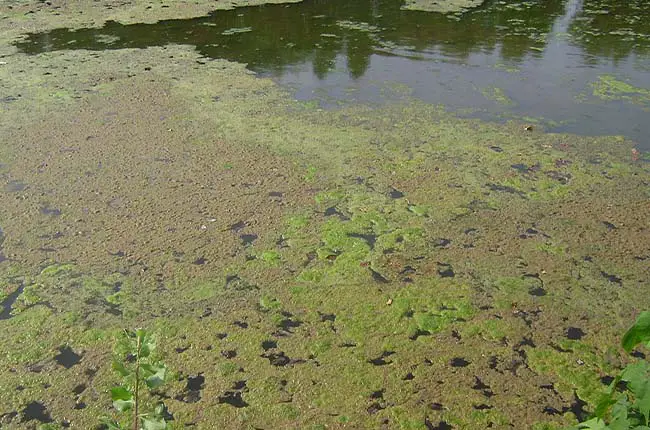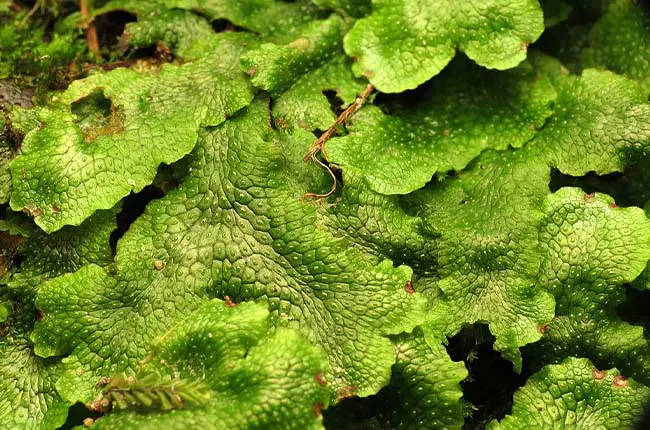Mosses are often mistaken for fungi, molds, algae, lichens, or liverworts because they are often found in damp environments and are simple organisms that do not produce flowers to reproduce. However, they are actually very different.
Mosses are small, green plants that do not have vascular tissues to transport water and nutrients. They have a unique spiral leaf arrangement on stems, lack true roots, and produce spores and capsules to reproduce.
In this article, we will clarify the classification and distinctive features of moss to help you identify one from the other.
What is moss classified as?
Mosses are classified as plants and belong specifically to the division of Bryophytes.
Along with liverworts and hornworts, they make up the three main groups of Bryophytes.
How to identify moss?
Structure
A moss plant has simple, small leaves and stems that are usually unbranched or sparsely branched and do not contain true vascular tissue to transport water and food.
It has tiny root-like structures called rhizoids, which help anchor the moss to its substrate and help with water absorption.
Appearance
Mosses generally have a small, soft, and delicate look, ranging from ¼ inch to 2 inches (from a few millimeters to a couple of centimeters) in height.
Most of them form dense, low-lying mats or cushions on tree trunks, rocks, and soil.
Texture
Mosses exhibit a variety of textures, from velvety, cushiony to wiry and hair-like.
Color
They display a wide range of colors, including various shades of green, yellow-green, and even brownish or reddish tones.
Reproduction
Mosses do not have flowers and reproduce both asexually and sexually.
Sexual reproduction occurs through the development of spores within capsules. These capsules are borne on stalks called setae, which extend from the tip of the moss plant.
Asexual reproduction, on the other hand, takes place through the fragmentation of the moss plant or the production of specialized structures called gemmae.

Moss vs Algae
Algae and mosses are both simple plants that do not have vascular tissues to transport water and food, nor do they produce flowers and seeds. But they come from two completely different organisms, with mosses from the Plantae kingdom and algae from the Protista kingdom.
A major difference is that algae often appear as a slimy or gelatinous mass with no structure, stems, leaves, or true roots. Mosses, on the other hand, have a more structured form with small leaves, stems, and root-like structures called rhizoids, and primarily live on land.
The color of mosses is usually green, ranging from dark to bright shades, whereas algae can vary from green, brown, or red, depending on the type.
Another difference is their habitats. Moss prefers terrestrial environments and grows on solid surfaces like tree trunks, rocks, or soils, while algae are predominantly aquatic, thriving in ponds, lakes, and oceans as microscopic green algae or larger forms such as seaweed.
Their roles in ecosystems are also different. Mosses retain moisture and nutrients, providing a habitat for small invertebrates, and preventing soil erosion. On the other hand, algae serve as primary producers, supplying energy and resources for various types of aquatic organisms, including fish and zooplankton.

Moss vs Mold
Moss and mold are two different types of organisms.
Mosses are simple plants that belong to the group known as bryophytes.
They can grow on various substrates, like tree trunks or rocks, and in a variety of habitats, such as forests and wetlands. They have stems and leaves, though they are much simpler than those of higher plants.
They reproduce using spores but also can grow vegetatively through branching and fragmentation.
Mold, on the other hand, belongs to the fungi kingdom.
Unlike moss, mold is not a plant and does not photosynthesize.
Molds are decomposers; they break down dead organic material, such as leaves, wood, and other dead organisms. Some fungi form mutually beneficial relationships with plants, such as mycorrhizal associations, which aid plant absorption of nutrients while providing the fungus with organic compounds produced through photosynthesis.
Molds reproduce by releasing spores, which can spread through the air or water.
Mold can often be found growing in damp, warm environments, and some types of mold can cause health problems if inhaled or ingested.
Moss vs Lichens
Mosses and lichens differ significantly in their taxonomy.
Moss are plants that lack vascular tissues to transport water and food. On the other hand, lichens are a symbiotic partnership of two organisms: a fungus and an alga. The fungus provides structural support and protection and the alga contributes to food production via photosynthesis.
The unique relationship gives lichens a wider variety of colors compared to mosses. Many lichens are grey or gray-green, but they can also be found in a range of other colors including yellow, orange, red, violet, brown, and black. Some lichens can change color when wet, appearing more vibrant or darker. On the other hand, mosses are generally green, ranging from bright, vibrant greens to dark, dull greens due to the presence of chlorophyll.
They also have very different growth forms and structures. Mosses are small and leafy, with tiny leaves attached to a central stem. Lichens, on the other hand, display various forms, which can be “crustose” (crust-like), “foliose” (leaf-like), or “fruticose” (branch-like).
Mosses typically grow in moist areas but lichens can be found in various environments, from arid deserts to polar regions, exhibiting remarkable resilience to harsh conditions.
They both play a vital role in the ecosystem, such as aiding in soil formation, retaining moisture, and providing habitat for microorganisms and invertebrates.

Moss vs Liverworts
Mosses and liverworts share many similarities as they are both bryophytes, a group of plants that lack vascular tissues to transport water and nutrients.
They have similar growth habitats, primarily thriving in damp, shaded environments such as forests, rocks, and soil surfaces.
But their appearance can be quite different. Mosses typically have a unique branching and hair-like growth pattern with a stem, whereas liverworts have a thin, flattened structure known as thallus.
Although they both reproduce through spores, their reproductive structures differ. Mosses have capsule-like structures called sporophytes, but liverworts produce spore-containing capsules within specialized structures.
Liverworts are generally more sensitive to environmental conditions, making them less widespread in their distribution compared to mosses. But mosses are generally more resilient and can tolerate a wider range of environmental conditions.
Mosses help bind soil particles together and assist in preventing erosion by reducing water runoff.
Liverworts also contribute to soil stabilization but release unique compounds into the environment, influencing the growth and interactions of other organisms.

What should you do with moss in gardens and lawns?
You may find moss in your gardens due to its ability to grow in damp, shady areas where other organisms may struggle.
Moss growth in lawns is usually an indicator of underlying issues, such as poor soil fertility, compaction, or drainage problems.
This is because moss can survive in nutrient-poor soil and without direct sunlight, making it adaptable to various lawn conditions.
To control moss in lawns, you may opt for a variety of treatments, including chemical applications or manual removal techniques.
However, it is crucial to address the underlying conditions in the soil that are promoting moss growth. Fertilization, improved drainage, and adjusting the soil pH can help to create an environment more conducive to grass growth, keeping moss at bay.
Happy gardening!
Related
Reproducing Without Flowers: 11 Examples (Pictures)
Top 3 Inoculants for Plants: More Than Just Mycorrhizae
- Top 6 Drip Irrigation Systems for Raised Beds (2025) - January 31, 2025
- Top 10 Orchid Fertilizers: A Comprehensive Review (2025) - January 16, 2025
- Top 6 Slow-Release Fertilizers for Houseplants & Veggies (2025) - January 15, 2025

